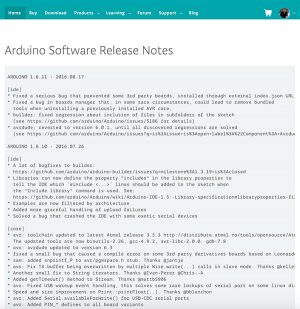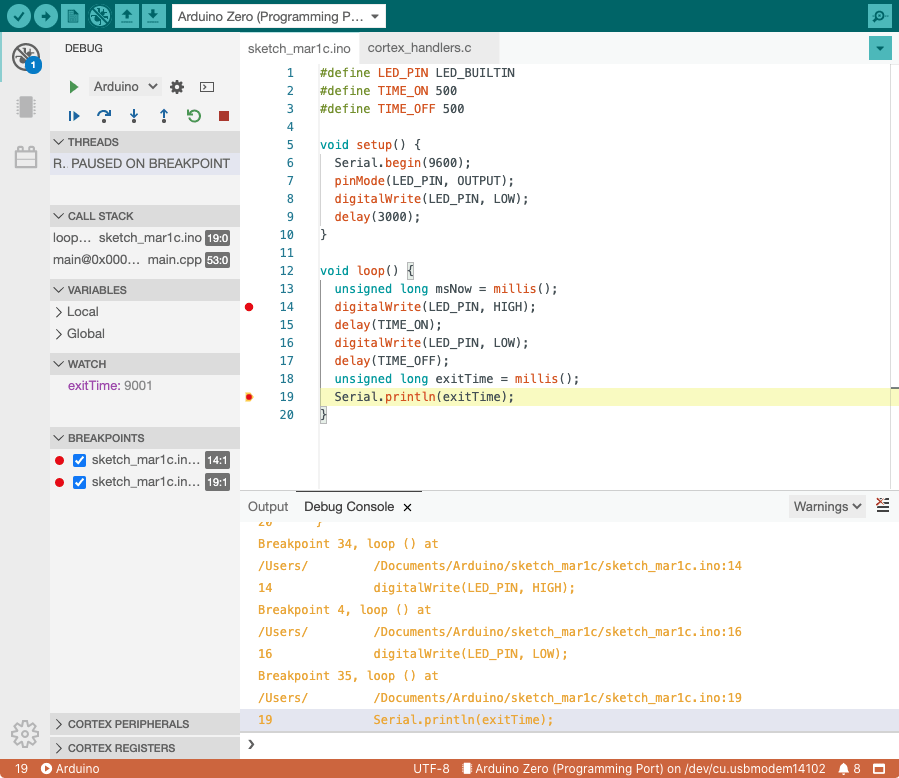

#ARDUINO IDE 1.8.19 SERIAL#
Go back to Tools ► Serial Port ►, and see which port appeared that wasn't there before.Go to Tools ► Serial Port ► and see which ports are listed (e.g.One way to figure out which port it is on is by following these steps: It seems like the IDE 2. It is a self designed PCB and I am able to flash it with the Arduino IDE (1.8.19) for various reasons I would like to use the Arduino IDE 2.0 or VS-Code. Make sure you selected the right port in Tools ► Serial Port ►. Hello everyone (First Post) I am currently trying to flash my latest project.The board should say what version it is on the microchip. If you are using the Duemilanove 328, select that instead of Duemilanove 128. Make sure you select the right board in Tools ► Board ►, e.g.Disconnect and reconnect the USB cable.
Copy this folder to the tools subfolder you created in the sketchbook location. Here are some easy things that can often fix this error: The unzipped file contains a folder named ESP8266FS. I also try to run a bisection to see which change actually fixed the issue.This is caused by a generic connection error between your computer and the Arduino, and can result from many different specific problems. As with the bisection, I can always run or build any version of the IDE from source, but this takes more time. Since we request that the latest nightly build be checked when submitting a formal bug report, this means that just having each of the releases on hand is not sufficient. So it is useful to be able to start up the exact version that was in use at the time of the report.
#ARDUINO IDE 1.8.19 INSTALL#
To install Teensy on Arduino IDE 2.0, click File > Preferences.

#ARDUINO IDE 1.8.19 SOFTWARE#
In order to do that, I must first verify that I can reproduce the bug in the first place. Download Teensyduino, Version 1.58 Arduino 2.0.x Software Development First download the Arduino 2.0.x IDE from Arduinos website. I also regularly must check whether a bug reported some time ago still occurs, or whether it was fixed incidentally by some of the development done since that time. Double click on install.sh file and select Execute or Execute in Terminal. Right-click on the file and select Extract Here. Connect your Raspberry Pi to the internet and enter this URL in the browser: Download the Arduino software for Linux operating systems based on ARM processors.

So having a pre-built IDE on hand is the quickest way to test a given version (and I must test many versions during this process). First Step: Download the software from the Arduino website. Starting from source is faster, but still slow. The production build takes a long time.The IDE's bugs are often timing sensitive, and those timings are significantly different when running from source, which can mean that you get different results while running from source than from a production build. The IDE has significantly worse performance when running from source (because you miss the optimizations done via the build process).I also use that technique, but there are some problems with using the Git repository for this sort of work: Typically the best way to do a bisection is using the git bisect command in the project's Git repository (which contains the entire revision history of the project). One of the things I try to do while investigating a bug is a " bisection", where I determine the exact point in the development history the bug was introduced at.


 0 kommentar(er)
0 kommentar(er)
